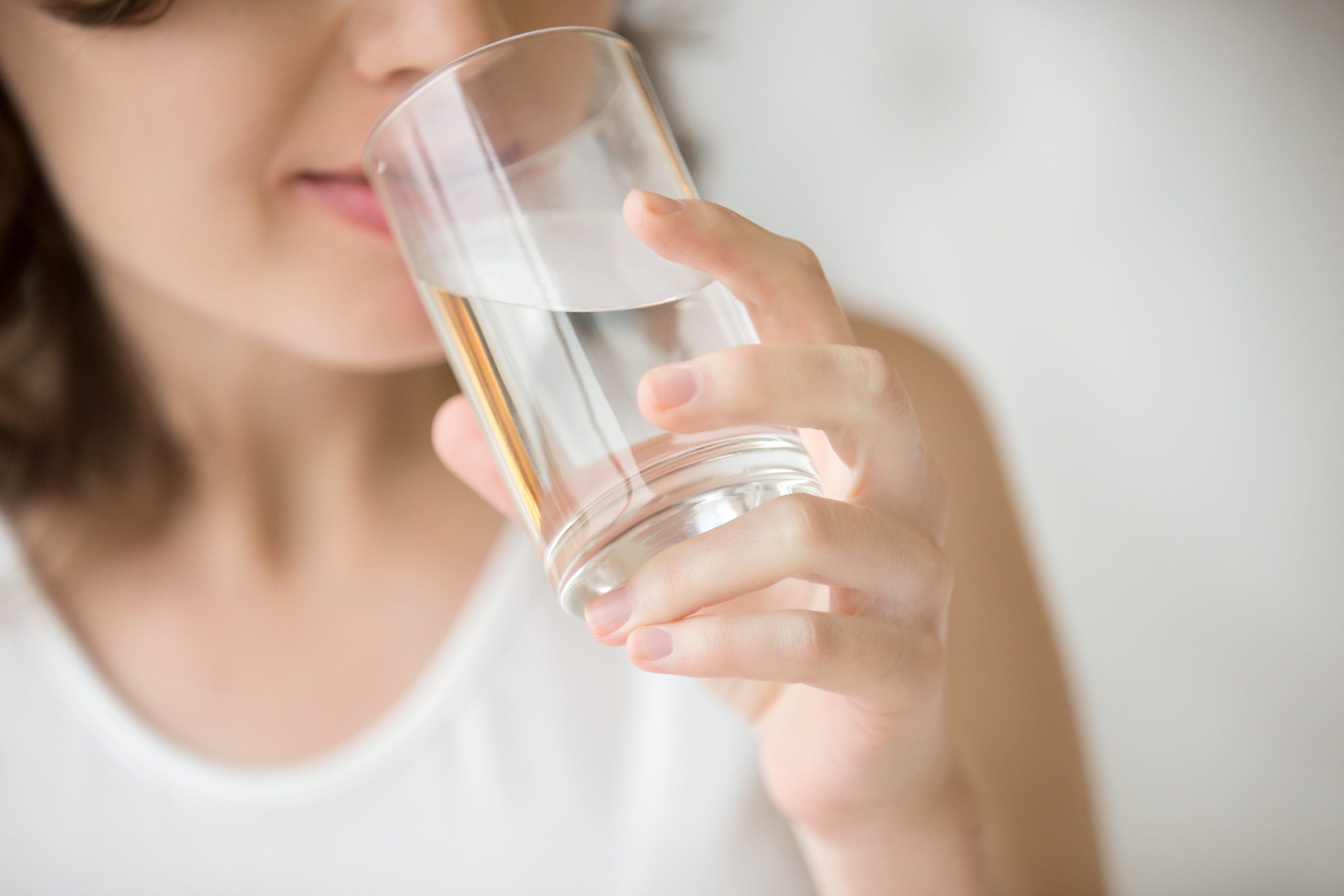The congratulatory calls and emails were pouring in, and Kathrin Schilling was trying her best to keep up with them all. A new study for which Schilling was the senior author disclosed the presence of such harmful metals as lead and arsenic in tampons.
Schilling’s work achieved the kind of mainstream attention of which researchers dream, gaining coverage in national news outlets and driving a broader public conversation about toxic chemicals in women’s hygiene products.
And while her study answered an important public health question, Schilling was struck by one query from some of her well-wishers.
“Everybody says, ‘Why hasn’t this been studied? Is it because it’s a product for women?’” said Schilling, an assistant professor of public health at Columbia University. “Yeah, could be.”
The Center for Baby and Adult Hygiene products, a trade association, said in a statement that it is aware of the study and that “tampons are safe and have been used by people globally for many years.”
Explore the latest news about what’s at stake for the climate during this election season.
“It is important to understand that the trace amounts of metals reported in the study are so low that they fall within the FDA safe food intake recommendations. These amounts are also naturally found in water, soil, and air, and do not pose a health risk,” the statement said.
Schilling’s study is part of what historians and public health experts say is an increased interest in expanding the body of scientific knowledge around a topic that some argue has often been needlessly stigmatized in the research world and among the public at large: the safety of women’s menstrual products.
From a climate perspective, environmentalists say Schilling’s study raised troubling questions about the global extent of toxic metal contamination, some of which could be related to air, water and soil pollution linked to fossil fuels, industrial manufacturing and pesticides.
“It is potentially getting worse as there is more heat and as the metals are cycling through our environment,” said Alexandra Scranton, director of science and research at Women’s Voices for the Earth, a national environmental health advocacy organization.
Extreme weather events caused by global warming, such as flooding, can unearth and move contaminants in soil.
“There’s more and more there to contaminate things, so it’s now coming into these products which you don’t think of as applying metals intentionally. But this contamination is now getting in there,” Scranton said. “And I think the awareness that this study really raised was women realizing, like, ‘Oh, this is very, very personal to me. This is how toxic pollution is affecting me … in a very personal way.’”
“It is potentially getting worse as there is more heat and as the metals are cycling through our environment.”
She noted that for some, the tampon study is the beginning of an awareness connecting the toxic contamination of the planet to the climate crisis. Scranton added that there is a growing body of research examining how women are disproportionately impacted by climate change, especially in regions where they are responsible for securing food, water or fuel.
“I think having climate change hit home personally and disproportionately for women, this [study] is kind of one of those sort of signal events that people are like, ‘This is not right. We should not be contaminating our world in this way.’ And it is getting worse as the world gets hotter,” she said.
Schilling’s study sought to shed light on some of the unknowns around tampons, which had been the subject of research before—but have rarely been examined with toxic metals in mind.
Schilling and her team tested 30 tampon brands for the presence of 16 metals. They found that 14 of the 16 metals were present in all the tampons; two toxic metals—chromium and mercury—were not detected.
Lead has been linked to a range of adverse health effects, including impairing brain development in children and causing such ailments as hypertension, kidney problems and damage to reproductive organs.
Arsenic is a known carcinogen and is naturally found in groundwater in some countries. In addition to cancer, long-term exposure to arsenic in food and drinking water can cause skin lesions and other ailments.
Schilling and her co-researchers said there were a range of possible explanations for the presence of the metals in tampons—the cotton used to make them, for example, might have absorbed the substances from the water, air or soil while growing.
Some metals, the research team said, could come from industrial sources such as lead smelters. Other potential sources include exposure to metals that occur naturally in the environment, or if the metals were intentionally added by manufacturers to reduce bacteria or eliminate odors.
Schilling, a specialist in analytical chemistry, said she and her team were stunned by their findings.
“What was shocking to us was when we first measured it, it’s, like, ‘Oh, we pick up lead and we pick up arsenic, and we pick up all the other metals.’ It’s not what you expected. Ideally it’s not there.”
Schilling noted that there was significant interest in studying tampons when cases of toxic shock syndrome were at their peak in the 1980s. The bacterial infection, which can develop during prolonged tampon use of roughly eight hours or more, attacks the organs.
In 1980, 772 women were diagnosed with toxic shock syndrome related to menstruation, 38 of whom died. Today it is estimated that there are anywhere from 0.8 to 3.4 cases of toxic shock for every 100,000 Americans each year.
Federal regulators required manufacturers of tampons—which are classified as a medical device—to change the way they produced the products.
“Now companies are allowed to add amendments to the tampons to avoid this bacterial growth,” Schilling said. “And one thing they are adding that’s on the package, that’s labeled, is titanium oxide, for example. It’s basically toxic for the bacteria.”
But it’s unclear, Schilling said, if it’s toxic for people, too. (Her team did not test for the presence of titanium.)
Schilling noted that because of long-standing federal regulatory guidelines, the makers of most personal hygiene products, including tampons, have not been required to list the ingredients that they use—a practice that consumer advocates have long criticized.
A law that went into effect late last year, the Modernization of Cosmetics Regulations Act, or MoCRA, will allow federal officials to learn more about what goes into personal hygiene products. But advocates say the measure contains loopholes that can be exploited by manufacturers to limit what the public knows about what’s contained in products like intimate washes, wipes and douches.
This story is funded by readers like you.
Our nonprofit newsroom provides award-winning climate coverage free of charge and advertising. We rely on donations from readers like you to keep going. Please donate now to support our work.
Donate Now
Another member of Schilling’s team, Jenni A. Shearston, a researcher at the University of California, Berkeley, who was first author on the study, said the group is planning future studies to determine whether metals can be absorbed into the body from tampons.
“When we find something harmful in a tampon, we want to know, ‘Well, could it come out? Could it get in my body and impact my health?’” Shearston said. “And so those are the next questions that we’re working on. It’s important that consumers, the people who use tampons, are aware of the presence of these metals. I don’t want any panic. I don’t want people to jump too far because, well, while those metals are there, again, we don’t know that they’re impacting health. But I also really love it for people to be asking, ‘Hey, like, what’s in my menstrual products?’”
Ami Zota, another Columbia researcher who also studies chemical substances in cosmetics and personal hygiene products, said that the study by Schilling’s group—which she was not involved in—represents a significant step forward.
“They’re starting to fill critical research gaps related to chemicals and consumer products and impacts on women’s health,” Zota said. “These are products many individuals are using, not just for years but decades. So we’re really talking about chronic exposures that individuals with uteruses face from the time they hit puberty through to menopause.”
Zota said manufacturers should provide greater transparency about what goes into their products and regulators ought to hold them accountable.
“It really speaks to the need for greater federal oversight and scrutiny, and putting more accountability on companies as well, because we know that chemicals like lead, there’s no safe level,” Zota said. “So we really don’t want them in consumer products that we’re using for many years in intimate areas.”
Robin Dodson, an exposure scientist at Silent Spring Institute, where she researches the environment and women’s health, said that the findings about lead and arsenic made her wonder what other metals and substances people are unknowingly exposed to.
“It’s just really concerning,” she said. “This is ending up in these kinds of products. What else is it ending up in that we don’t test for? Keep track of?”
“It really speaks to the need for greater federal oversight and scrutiny, and putting more accountability on companies as well…”
For some, it’s more than just about tampons. The trace metals found there are essentially a canary in the coal mine on the extent of global pollution and how that contamination seeps into products people use everyday.
The institute Dodson works for is named after the environmentalist Rachel Carson’s landmark 1962 examination of how pesticides were indiscriminately destroying animal and plant life.
“The beauty of thinking about Rachel Carson’s work in ‘Silent Spring’ is that she was not showing an impact on human health necessarily,” Dodson said. “It was the more subtle effects, like this idea of what happens if the animals in our environment can’t reproduce effectively.”
She said these small shifts and changes are very important because “it’s those preliminary or first subtle effects that I think are just kind of indicators of the larger problem.”
“And it’s important to look there,” said Dodson. “We don’t have to say, ‘Look, let’s just wait to see if this becomes a big deal.’ Let’s use the first hint that maybe there’s a connection here so that we can be more mindful as we’re moving forward about the potential broader impacts of what we’re seeing on a more subtle level right now.”
Arnedra Jordan, project manager of the advocacy group Black Women for Wellness, said the health risks posed by metals in tampons can extend well beyond those who use them.
“If you wear these tampons and then if they’re going into a landfill, 20 years from now will that landfill cause cancer?” said Jordan. “We’re going to have to advocate for more policies and more specific regulations and standards so that we know what’s in the consumer products, and how they affect us—not just in our body, but in our community and in the earth.”
More research is needed to understand the health effects for tampon users. Federal recommendations on safe levels of metals in food may not be applicable here.
“It’s that really unique route of chemicals into the body,” said Scranton. “And there’s direct routes to the uterus that can affect the reproductive system, that can affect fertility and that can affect a healthy pregnancy. It can affect menstrual cycles. There’s all kinds of things that could affect your overall health from this kind of exposure. And we just don’t understand what all the implications are.”
Scientists study infertility and miscarriage, but Scranton said a missing piece is what kind of intimate care products participants were using.
“Those questions almost never get asked and I think they’re in fact really relevant,” she said. “But we just don’t have the data we need.”
Sharra Vostral, an assistant dean at Northwestern University who studies the intersection of gender and technology, said that as the ranks of women in the sciences have expanded, so too has the level of research into a vital area of public health long pushed to the fringes.
According to figures from the U.S. Census Bureau, women accounted for just 8 percent of the workforce in the science, technology, engineering and medical fields in 1970. In 2019, women—while still widely underrepresented in those areas—made up about a quarter of the workforce in the STEM fields.
Those female perspectives, Vostral said, have helped bolster the focus around these lines of research. “So we’re starting to really question: ‘What are in the tampons? What do we know about them? And then what kind of health effects might these have?’ Because we just don’t know,” she said.
But for Jordan, of Black Women for Wellness, the study is a signal that people need to start examining their overall exposures.
“We have to educate Black women and all women to have them understand what their exposures are. You have to also be an advocate for yourself,” said Jordan. “‘Do I really need this? Should I purchase this?’
“And that’s not just for tampons but for any beauty or personal care that impacts you.”
About This Story
Perhaps you noticed: This story, like all the news we publish, is free to read. That’s because Inside Climate News is a 501c3 nonprofit organization. We do not charge a subscription fee, lock our news behind a paywall, or clutter our website with ads. We make our news on climate and the environment freely available to you and anyone who wants it.
That’s not all. We also share our news for free with scores of other media organizations around the country. Many of them can’t afford to do environmental journalism of their own. We’ve built bureaus from coast to coast to report local stories, collaborate with local newsrooms and co-publish articles so that this vital work is shared as widely as possible.
Two of us launched ICN in 2007. Six years later we earned a Pulitzer Prize for National Reporting, and now we run the oldest and largest dedicated climate newsroom in the nation. We tell the story in all its complexity. We hold polluters accountable. We expose environmental injustice. We debunk misinformation. We scrutinize solutions and inspire action.
Donations from readers like you fund every aspect of what we do. If you don’t already, will you support our ongoing work, our reporting on the biggest crisis facing our planet, and help us reach even more readers in more places?
Please take a moment to make a tax-deductible donation. Every one of them makes a difference.
Thank you,


















